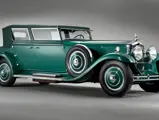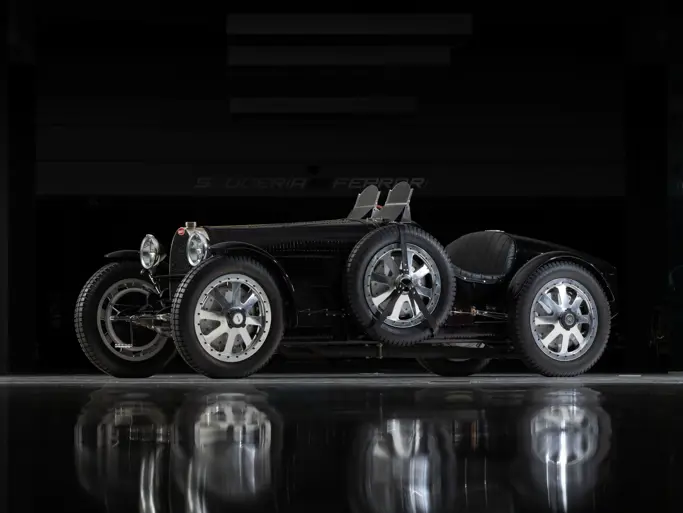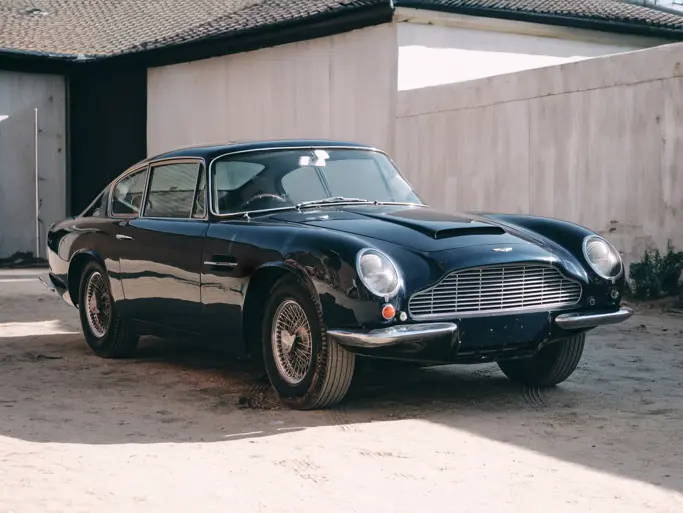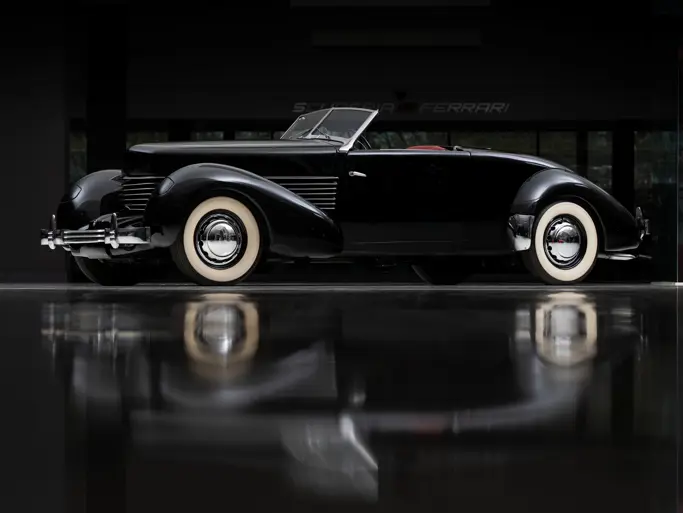Villa d'Este 2011
1931 Minerva 8 AL Convertible Sedan by Rollston
{{lr.item.text}}
€526,400 EUR | Sold
 | Cernobbio, Italy
| Cernobbio, Italy
{{internetCurrentBid}}
{{internetTimeLeft}}

130 bhp, 6,625 cc inline eight-cylinder sleeve valve engine with single Zenith carburettor, four-speed transmission, front suspension via beam axle and inline semi-elliptic leaf springs, rear suspension via live axle and inline semi-elliptic leaf springs, and servo-assisted four-wheel drum brakes. Wheelbase: 3,900 mm (153.5")
- Brilliant sleeve valve engineering in Minerva’s exclusive masterpiece
- Stunning Rollston coachwork; one of only about 50 eight-cylinder ALs built
- Superb Steve Babinsky restoration
- Multiple concours awards, including class win at Pebble Beach
Minerva
Minerva was named after the Roman goddess of commerce, craftsmanship, poetry, medicine, magic and the inventor of music. The car company was founded by a Dutchman, Sylvain de Jong. Like so many early automobile companies, it began as a machine shop manufacturing bicycles. It was the manufacture of bicycles that led him to small one- and two-cylinder engines, which could be adapted to existing bicycles or purchased together.
Bicycles led to automobiles, and the company expanded quickly. From 200 employees in 1899, the first year, by 1912 the company employed 1,600. The advent of the First World War changed everything, and those who could get to London were housed in the company’s London dealership. Those who could not refused to work for the Germans, and as a result they seized the factory and turned it into a vehicle repair operation.
After the war, de Jong began working on new designs. Unfortunately, protectionism, which was rampant throughout Europe, was not implemented in Belgium, with the predictable result that the big international companies quickly established plants there, and volumes grew quickly. Companies like Minerva were relegated to niche markets.
Sylvain de Jong passed away in 1928, leaving his brother in charge of the factory. It was under his control that the company’s greatest product was introduced – the magnificent eight-cylinder AL. A sleeve valve masterpiece, it was smooth and quiet but frighteningly expensive, and it is thought that no more than 50 were produced before the plant closed. They were, however, the greatest cars Minerva had ever made.
The Sleeve Valve Engine
The contemporary poppet valve engine design, while efficient, was quite noisy in operation. Every revolution required a valve in each cylinder to open or close, slamming to a stop at the end of each of these motions. In the case of an eight-cylinder engine, the result was eight such operations on every revolution. It created a cacophony, and engineers spent fortunes trying to abate the noise.
The solution was the sleeve valve engine, invented by Charles Knight. With his design, opening and closing of valves was accomplished by a pair of slotted sleeves which moved up and down within the cylinder bore and within which the piston reciprocated. When the ports in the two sleeves aligned with the exhaust port, the exhaust cycle was underway. Intake worked according to the same principle. The action of the sleeves moving up and down was caused by a fairly conventional camshaft, acting on roller bearings affixed to arms attached to the bottom of each sleeve.
This innovative design at once eliminated all the sources of mechanical noise as the movement of well-lubricated sleeves up and down (with no sudden stops or starts) made no sound whatsoever. There were other benefits as well, such as leaving the entire cylinder head area available to optimise its shape and the position of the spark plug. The only downside to the sleeve valve design was the oil consumption, particularly if the car was unused for a period of time. Fortunately, as the engine acquired mileage, carbon build-up on the inner and outer surfaces of the sleeves caused them to seal better as time went on, causing it to consume less oil, not more.
Knight’s marketing plan was clever in that rather than use his engine as the basis for building a complete car, he licensed the technology to the top automakers in each country – Daimler in England, Panhard et Levassor in France, Mercedes in Germany and of course Minerva in Belgium, among others.
Chassis 80105
The Minerva offered here was purchased by Henry Walker Bagley of New York and his wife Nancy, the youngest daughter of the late R.J. Reynolds, founder of the R.J. Reynolds Tobacco Company, in 1931. Mr. Bagley ordered the top-of-the-line eight-cylinder Minerva chassis from the factory in Belgium and commissioned Rollston to design the body.
In later years, the car was acquired by D. Cameron Peck, one of the most prolific collectors of his era, for his Long Island Motor Museum. Subsequent owners included Fred H. Bultman, Dr. James Dees and Gerald A. Rolph. RM Classic Cars Inc. purchased three cars from Gerald Rolph, including this Minerva, which was then sold to noted collector Charles Morse of Seattle, Washington in the late 1990s.
Morse subsequently commissioned the car to a full restoration by internationally renowned restorer Steve Babinsky in 1998, following which the car was invited to Pebble Beach – where the beauty of the car and the quality of the restoration was recognised by a first in class award.
It was an award winner in 1999 at many shows, including the Meadow Brook and Amelia Island concours events and Louis Vuitton in New York. The same year it was awarded its First Junior at Hershey in 1999 followed by “Best of Show” at the Grand Classic National Meet in Cleveland shortly afterwards.
Driving the AL today offers a glimpse into what might have been. The car is ghostly quiet and accelerates like an electric car. The Rollston coachwork is stunning, one of the finest collaborations between an American coachbuilder and a European chassis builder. With its superlative restoration, it is not only wonderful to admire but almost certainly even better than the day it was built. It is a car that would earn pride of place in any important collection.
130 cv, motore avalve 8 cilindri in linea di 6.625 cc con un carburatore Zenith, cambio a quattro marce, sospensione anteriore con balestre semi-ellittiche, sospensione posteriore ad assale rigido con balestre semi-ellittiche, freni a tamburo sulle quattro ruote con servofreno. Passo: 3.900 mm
- Capolavoro esclusivo Minerva con motore avalve
- Stupefacente carrozzeria Rollston; uno di soli circa 50 esemplari del modello 8 cilindri AL
- Superbo restauro di Steve Babinsky
- Vincitrice di numerosi premi, compresa una vittoria di classe al Concorso di Pebble Beach
Minerva
Minerva era, presso i Romani, il nome della dea del commercio, dell'artigianato, della poesia, della medicina, della magia e della musica. La casa automobilistica fu invece fondata da un'olandese, Sylvain de Jong, che come molti altri imprenditori dell'epoca aveva iniziato costruendo dapprima biciclette e quindi piccoli motori mono- o bi-cilindrici, che potevano essere montati anche sulle biciclette già in circolazione.
Le biciclette portarono alle automobili e la società si espanse in breve tempo. Dai 200 dipendenti del 1899, primo anno di produzione, era passata già nel 1912 a 1.600. Lo scoppio della Prima Guerra Mondiale cambiò ogni cosa: quelli che riuscirono a raggiungere l'Inghilterra furono ospitati nella sede londinese della società, mentre quelli che non poterono rifiutarsi di lavorare per i tedeschi rimasero nella fabbrica requisita che fu trasformata in un'officina per la riparazione di veicoli.
Dopo la guerra, de Jong ricominciò lavorando su nuovi progetti. Purtroppo il protezionismo, che aveva preso piede in tutta Europa, non fu attuato in Belgio, con il risultato che le grandi società internazionali vi impiantarono velocemente le loro fabbriche, che lavoravano a pieno volume, e le piccole società, come la Minerva, dovevano accontentarsi di nicchie del mercato.
Sylvain de Jong morì nel 1928, lasciando la responsabilità della fabbrica al fratello, che in seguitò presentò il migliore prodotto della casa, la magnifica 8 cilindri AL. Un capolavoro con motore avalve, comoda e silenziosa ma spaventosamente cara, e infatti se ne produssero non più di 50 esemplari prima della chiusura della fabbrica. Furono comunque le migliori vetture mai prodotte dalla Minerva.
Il motore avalve
Il motore con valvole verticali dell'epoca sebbene efficiente, era piuttosto rumoroso. Ogni giro richiedeva una valvola in ogni cilindro da aprire o chiudere, che sbatteva contro un fermo ad ognuno di questi movimenti. Nel caso dei motori a 8 cilindri, il risultato era otto di questi movimenti ogni giro. Ciò creava un rumore sgradevole e i progettisti spendevano delle fortune nel tentativo di eliminarlo.
La soluzione fu il motore avalve inventato da Charles Knight. Nel suo progetto, l'apertura e la chiusura delle valvole era realizzata da un paio di foderi scanalati che si muovevano su e giù nel cilindro e con le quali si alternava il pistone. Quando entrambe le luci di scarico sui due foderi si allineavano avveniva il ciclo di scarico. L'aspirazione funzionava con lo stesso principio. L'azione del movimento su e giù dei foderi era diretto da un albero a camme abbastanza convenzionale, che agiva su cuscinetti a rulli attaccati a bracci fissati alla parte inferiore di ogni fodero.
Questo progetto innovativo finalmente eliminava tutte le fonti del rumore meccanico poiché il movimento su e giù dei foderi ben lubrificati (senza improvvisi stop o ripartenze) non faceva rumore. C'erano anche altri benefici, come la possibilità di avere l'intera area della testa del cilindro disponibile per ottimizzare la sua forma e la posizione della candela. L'unico punto debole del progetto delle valvole a fodero era il consumo d'olio, specialmente se la vettura non era per un lungo periodo di sosta. Fortunatamente, man mano che il motore acquistava chilometraggio, l'accumulo di carbonio sulle superfici interne ed esterne dei foderi permetteva loro, con il passare del tempo, di sigillare meglio, consentendo un consumo d'olio minore e non maggiore.
Il programma commerciale di Knight si rivelò intelligente: anziché usare il suo motore per costruire una vettura completa, concesse la licenza di costruirlo alle case più importanti di ogni paese, Daimler in Inghilterra, Panhard et Levassor in Francia, Mercedes in Germania e naturalmente Minerva in Belgio, fra le altre.
Il telaio 80105
La Minerva offerta fu acquistata nel 1931 da Henry Walker Bagley di New York e dalla moglie Nancy, la figlia più giovane del defunto R.J. Reynolds, fondatore della R.J. Reynolds Tobacco Company. Bagley ordinò il telaio 8 cilindri, il top di gamma, direttamente in fabbrica in Belgio e incaricò Rollston di disegnare la carrozzeria.
Anni dopo, la vettura fu acquistata da D. Cameron Peck, uno dei più importanti collezionisti dell'epoca, per il suo museo a Long Island, e fra i successivi proprietari ci furono Fred H. Bultman, il dottor James Dees e Gerald A. Rolph. La RM Classic Cars Inc. acquistò tre vetture da Gerald Rolph, fra le quali questa Minerva che alla fine degli anni Novanta fu venduta al noto collezionista Charles Morse di Seattle, nello stato di Washington.
Nel 1998 Morse commissionò un restauro totale della vettura al ben noto restauratore Steve Babinsky; alla fine dei lavori la vettura fu invitata a Pebble Beach, dove la sua bellezza e la qualità del restauro le permisero di vincere la classe.
Nel 1999 la vettura vinse premi ai concorsi di Meadow Brook, Amelia Island e Louis Vuitton a New York, si aggiudicò il First Junior a Hershey e fu proclamata “Best of Show” al Grand Classic National Meet a Cleveland.
Guidare oggi la AL dà una vaga idea di quello che avrebbe potuto essere. La vettura è silenziosa come un fantasma ed accelera come una vettura elettrica. La carrozzeria di Rollston è magnifica, rappresenta una delle migliori unioni fra lo stile americano e la meccanica europea. Grazie al suo superlativo restauro, è non solo stupenda da ammirare ma sicuramente anche migliore di quando è stata costruita; si potrebbe conquistare un posto d'onore in qualsiasi importante collezione.





